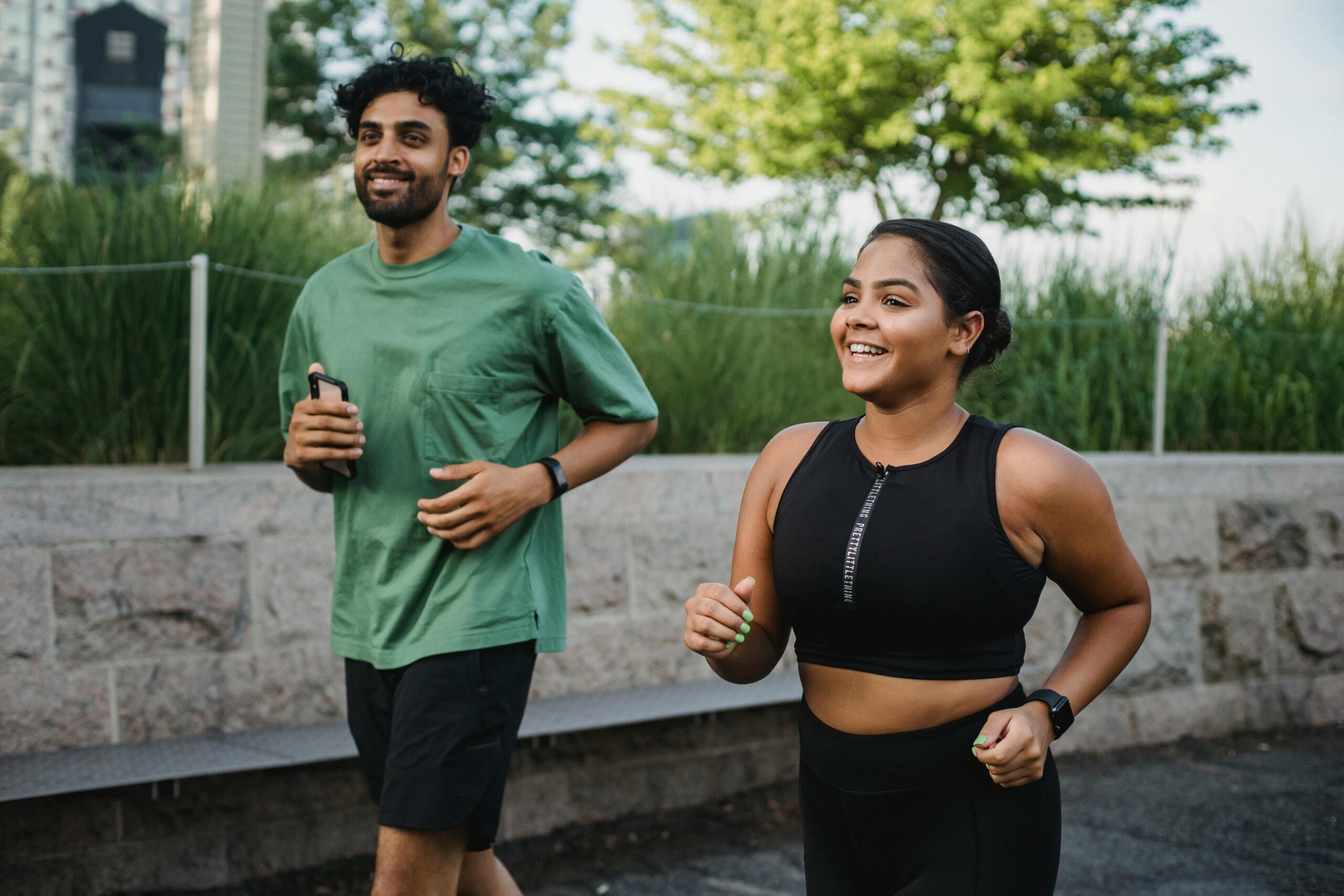A Natural Boost for Body and Mind
Feeling stressed, sluggish, or unmotivated? You’re not alone—many people struggle to maintain their energy and well-being in today’s fast-paced world. The good news is that there’s a powerful yet often overlooked remedy: physical activity. Exercise is far more than just a tool for weight loss; it’s a natural way to boost energy, reduce stress, and improve both mental and physical health. From strengthening your heart and muscles to enhancing your mood and mental clarity, the benefits of staying active go well beyond the gym.
In this blog post, we’ll delve into the many ways physical activity can transform your health and well-being. We’ll look at its impact on everything from cardiovascular health and weight management to stress relief and social connection. Plus, we’ll provide practical tips for incorporating movement into your daily routine, no matter how busy life gets. Whether you’re aiming to improve your fitness or simply want to feel more energized, there’s a form of physical activity that can help you thrive.
Physical Health Benefits
1. Cardiovascular Health
Regular physical activity has a profound effect on cardiovascular health. Exercise strengthens the heart, enabling it to pump blood more efficiently, which helps lower blood pressure and reduces the risk of heart disease. Activities like walking, running, or cycling boost the body’s ability to use oxygen, enhancing endurance and overall heart function. According to the CDC, just 150 minutes of moderate exercise weekly can significantly lower the risk of cardiovascular conditions, such as heart attacks and strokes, while also helping to manage cholesterol levels and blood pressure. Consistent movement makes physical activity a vital tool for preventing and managing heart-related health risks.
2. Weight Management
Exercise is crucial for managing weight, as it helps burn calories, supports a healthy metabolism, and aids in maintaining a balanced weight. Physical activity contributes to energy expenditure, which can prevent weight gain when combined with a healthy diet. The Mayo Clinic points out that consistency is key; even small amounts of daily movement, like taking the stairs or brisk walking, can make a big difference. Additionally, regular physical activity increases muscle mass, boosting the number of calories burned at rest. For effective weight loss, combining higher amounts of physical activity with dietary changes can help achieve and maintain weight goals.
3. Muscle and Bone Health
Maintaining strong muscles and bones is essential for overall health, especially as we age. Weight-bearing exercises, such as strength training, help build muscle and improve bone density, reducing the risk of osteoporosis and fractures. The CDC notes that such exercises can also alleviate arthritis symptoms by strengthening the muscles around joints, promoting better mobility. For older adults, combining strength, aerobics, and balance activities is especially important to reduce the risk of falls and maintain independence. By integrating these exercises into their routines, individuals can enjoy greater long-term mobility and physical function.
4. Immune System Boost
Exercise benefits the immune system by enhancing circulation, reducing stress hormones, and promoting better immune cell function. In fact, regular activity has been shown to reduce the frequency of common illnesses, such as colds, by helping the body flush out bacteria and improve immune response. Physical activity also plays a role in reducing the severity of infections; studies during the COVID-19 pandemic indicated that more active individuals had lower risks of severe outcomes. This reinforces how consistent exercise can act as a natural immune booster.
Mental and Emotional Health Benefits
1. Stress Reduction
Exercise is a powerful stress reliever, helping to lower cortisol levels (the hormone closely tied to stress) while encouraging a sense of relaxation throughout the body. This reduction in stress can set off a positive chain reaction, leading to better sleep, reduced anxiety, and an overall boost in well-being. Activities like yoga and tai chi, which incorporate mindful and gentle movements, are particularly effective for calming the mind and releasing tension. Furthermore, regular exercise also supports the HPA axis, the body’s natural stress-regulating system, keeping stress responses balanced and manageable.
2. Enhanced Mood and Mental Clarity
Exercise naturally lifts your mood by triggering the release of endorphins, brain chemicals that reduce pain and elevate your spirits. This “feel-good” effect can last for hours after a workout, enhancing both mental clarity and focus. Regular activity also boosts serotonin and dopamine—chemicals essential for maintaining mood, concentration, and a general sense of well-being. Beyond just a mood lift, exercise has also been shown to strengthen memory and slow age-related mental decline by increasing levels of brain-derived neurotrophic factor (BDNF), a protein that protects against cognitive deterioration.
3. Sleep Improvement
If you struggle with sleep, regular physical activity can be a true game-changer. Exercise helps regulate your circadian rhythm, the body’s internal clock, making it easier to fall asleep and stay asleep. Physical activity, especially in the morning or afternoon, can increase the amount of deep sleep you get—the restorative phase crucial for physical recovery and emotional stability. Studies even show that regular exercise can improve sleep quality for those dealing with anxiety and depression, making it a vital tool for better rest.
4. Reduction in Symptoms of Anxiety and Depression
Physical activity has been widely shown to ease symptoms of anxiety and depression. As previously introduced, exercise encourages the production of mood-regulating chemicals like serotonin, dopamine, and endocannabinoids, which promote calm and enhance mood. Research suggests that regular exercise can be as effective as some medications in treating mild to moderate depression, without the associated side effects. It also provides a mental break from negative thought patterns, helping to disrupt cycles of anxiety and depression and build emotional resilience.
Social Benefits of Physical Activity
1. Building Connections
Exercise isn’t just about fitness—it’s a great way to form meaningful social bonds that can help combat feelings of isolation. Whether you’re joining a group exercise class, playing on a sports team, or participating in a local walking club, physical activity creates a welcoming space for people to connect. Research shows that these group activities boost social support and create a sense of belonging, which can lead to higher life satisfaction. Sharing the experience of working out together adds an extra level of motivation, encouraging people to return not only for the exercise but for the sense of connection.
2. Accountability and Motivation
Having workout partners or teammates counting on you can be a strong motivator to stay on track with your fitness goals. Exercising with others adds energy and encouragement, creating an atmosphere where everyone pushes each other to reach their best. Research on community-based programs like parkrun (a 5k running event that takes place in parks and other outdoor spaces) show that people who feel connected to their exercise group often find more enjoyment in their workouts and are more likely to keep up their routine. This kind of social support plays a big part in maintaining motivation over time.
3. Positive Community Influence
Being part of a fitness community doesn’t just help with exercise goals; it often inspires healthier lifestyle changes overall. Spending time with others who value health and wellness encourages positive choices that extend into daily life. Studies show that people in fitness communities are likely to make healthier decisions and feel more motivated to stay active. Beyond the physical benefits, being in a health-focused community provides a supportive, encouraging environment that strengthens one’s commitment to an active lifestyle and promotes a shared sense of accomplishment.
Different Types of Physical Activity and Their Unique Benefits
- Aerobic Exercise (e.g., running, cycling)
Aerobic exercises like jogging, swimming, and cycling boost cardiovascular health by increasing endurance, improving lung capacity, and enhancing heart function. By moving large muscle groups, aerobic activities also improve oxygen flow, which benefits everything from mood to immunity, helping reduce the risk of chronic diseases and even extending lifespan.
- Strength Training (e.g., weightlifting, resistance bands)
Strength training, including weightlifting and resistance bands, is key to building muscle, maintaining bone density, and boosting metabolism. Strength exercises, performed at least twice weekly, improve muscle tone and burn more calories at rest. The benefits of this type of exercise even extend to lower body fat, better joint protection, and reduced risk of injury.
- Flexibility and Balance (e.g., yoga, stretching)
Practices like yoga and stretching enhance flexibility, reduce injury risk, and increase range of motion, making daily movements easier and safer. These activities also help release muscle tension, promote relaxation, and improve balance, supporting smoother and more comfortable motion in everyday tasks like bending and reaching.
- Functional Fitness (e.g., Pilates, bodyweight exercises)
Functional fitness routines—like squats, lunges, and core exercises—are designed to mimic everyday movements, building strength, coordination, and stability across multiple muscle groups. By improving balance and movement efficiency, functional fitness supports daily tasks, reduces the chance of strain, and enhances quality of life.
Tips for Incorporating Physical Activity into a Busy Schedule
- Set Realistic Goals
Start small and set achievable goals that can be gradually increased over time. This helps build a habit without overwhelming yourself. Even 10-15 minutes of daily exercise can make a difference.
- Choose Activities You Enjoy
Enjoyment is key to sticking with an exercise routine. Whether it’s dancing, hiking, or playing a sport, choose an activity that you find fun. When exercise doesn’t feel like a chore, it’s easier to stay consistent.
- Incorporate Activity Throughout the Day
Find ways to add movement throughout your day. This could include taking the stairs instead of the elevator, walking during lunch breaks, or using a standing desk. These small changes can add up over time.
- Track Your Progress
Keeping a record of your workouts or goals can help you stay motivated. Tracking allows you to see improvements and identify areas where you can challenge yourself further.
Your Path to Wellness
Committing to regular physical activity creates a foundation for a healthier, more vibrant, and balanced life. From boosting cardiovascular health and supporting mental clarity to enhancing social connections and reducing stress, movement brings countless benefits that enrich both body and mind. No matter your age, fitness level, or schedule, finding time to incorporate exercise can unlock a more energized, resilient, and fulfilled version of yourself. Start with small, achievable steps, and let each movement serve as an investment in your health and well-being. Embrace the journey toward a more active lifestyle—you’ll find that the rewards extend far beyond the gym and into every part of your life.
Sources
https://www.cdc.gov/physical-activity-basics/benefits/index.html
https://www.who.int/news-room/fact-sheets/detail/physical-activity
https://www.mayoclinic.org/healthy-lifestyle/fitness/in-depth/exercise/art-20048389
https://pmc.ncbi.nlm.nih.gov/articles/PMC9902068/
https://www.helpguide.org/wellness/fitness/the-mental-health-benefits-of-exercise https://www.mayoclinic.org/healthy-lifestyle/fitness/in-depth/aerobic-exercise/art-20045541
https://my.clevelandclinic.org/health/articles/7050-aerobic-exercise https://www.healthline.com/health/fitness/benefits-of-strength-training#takeaway
https://www.health.harvard.edu/staying-healthy/benefits-of-flexibility-exercises
https://www.healthline.com/health/fitness/functional-fitness-adults#takeaway





0 Comments